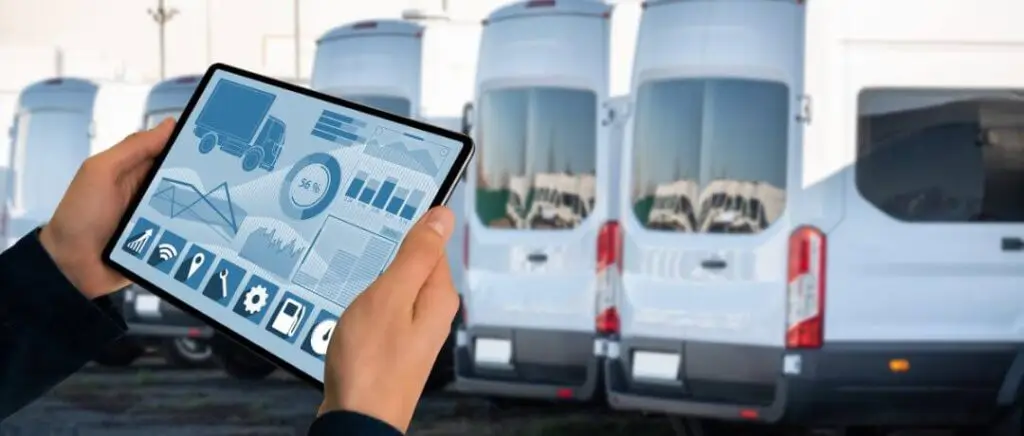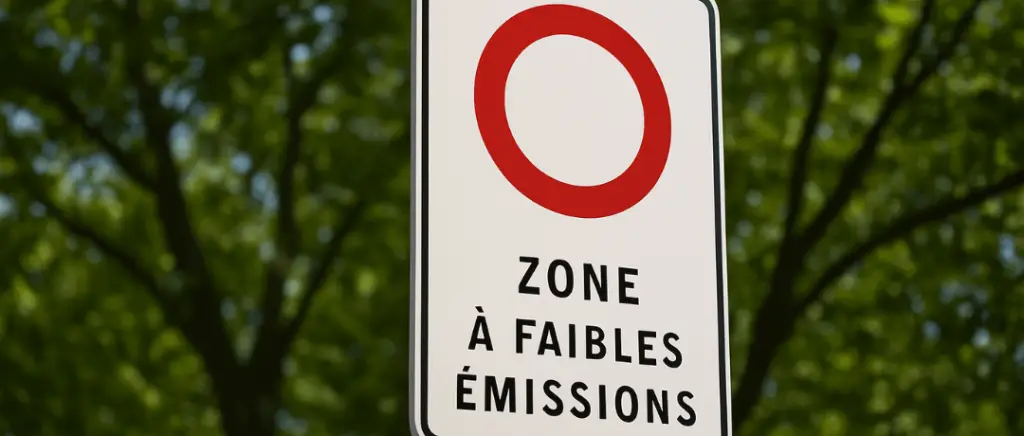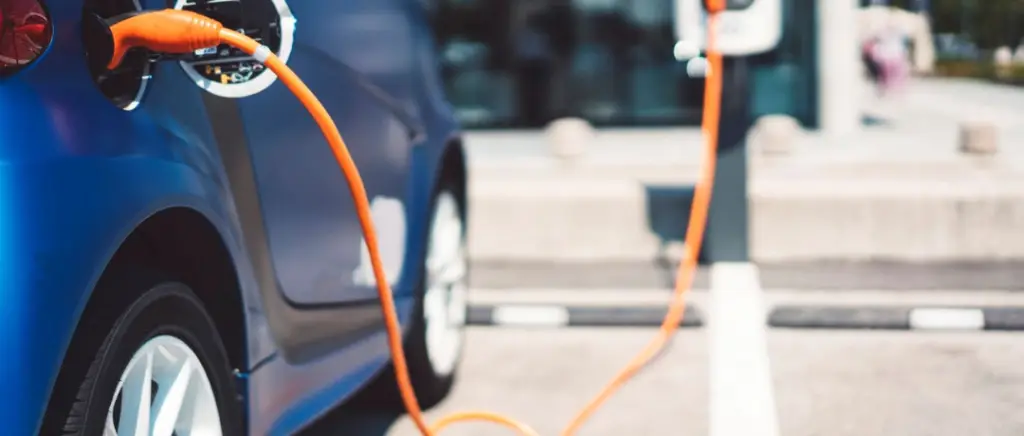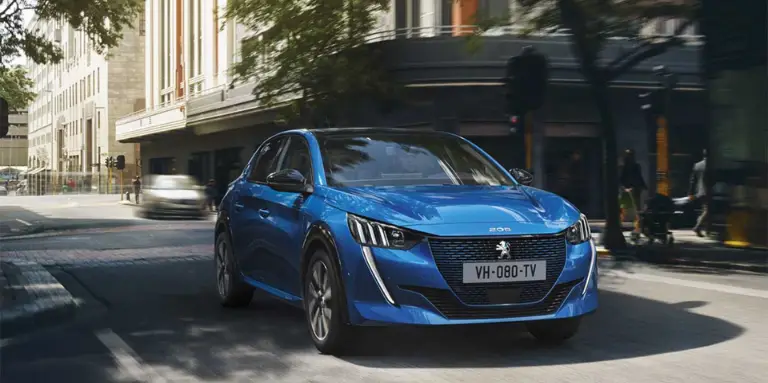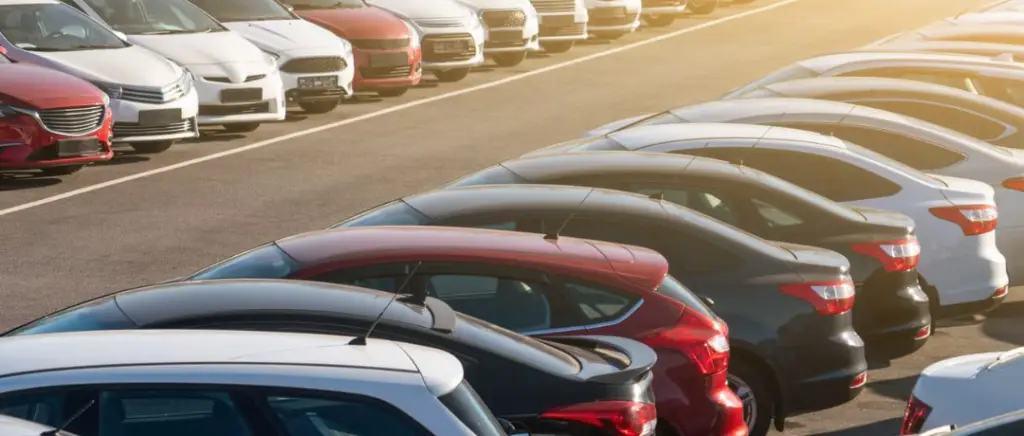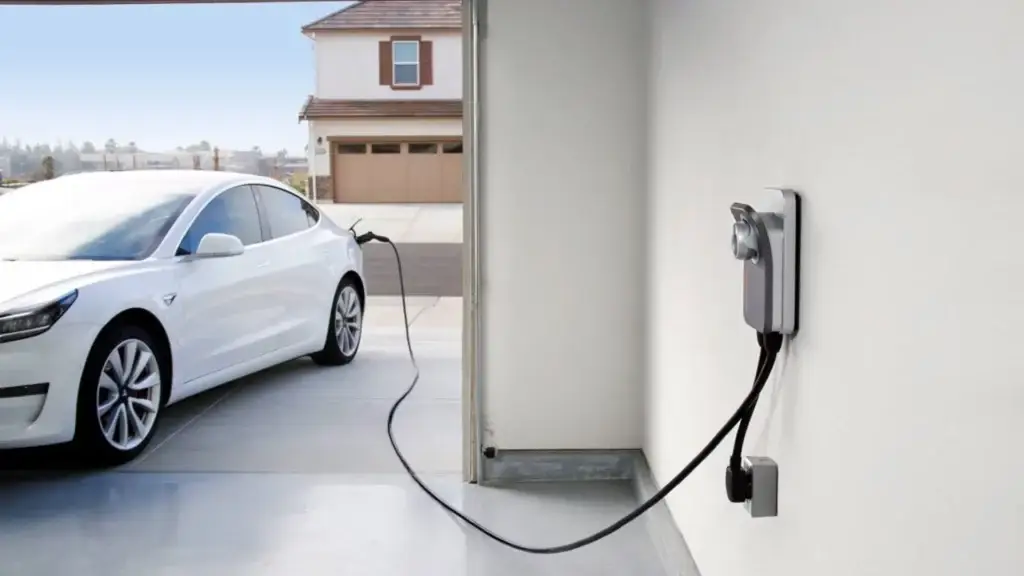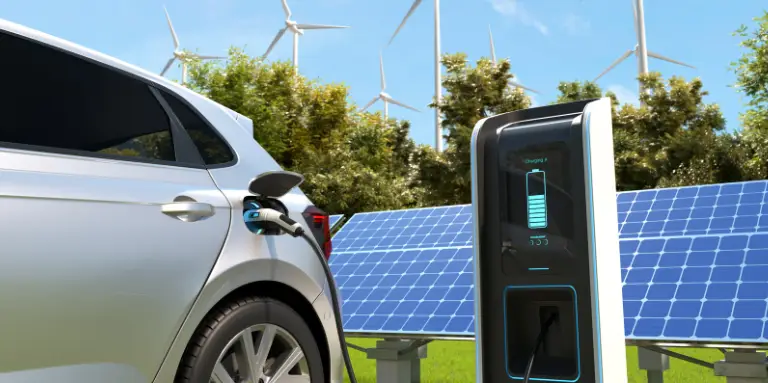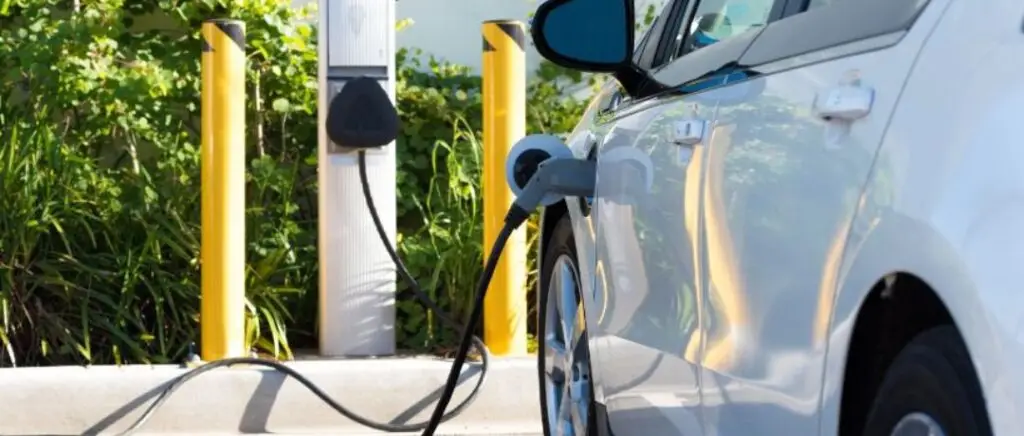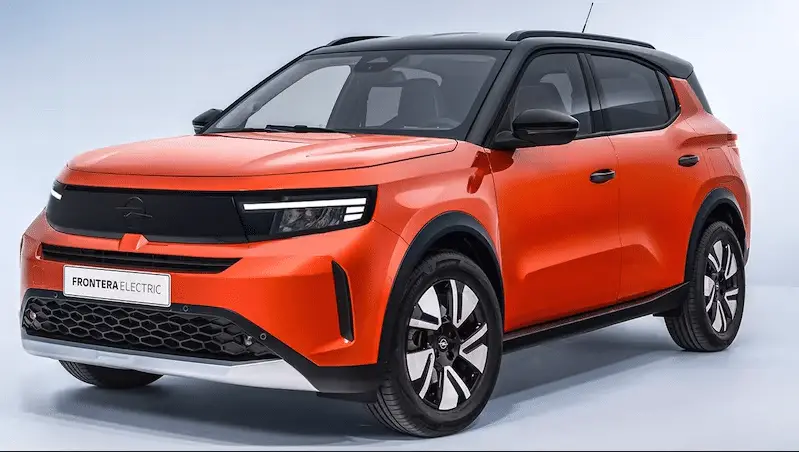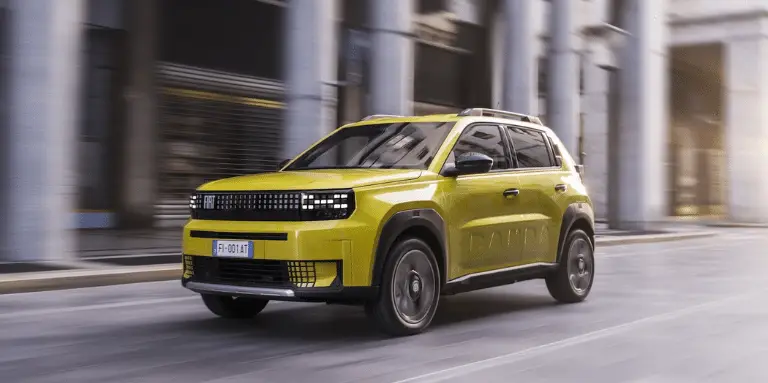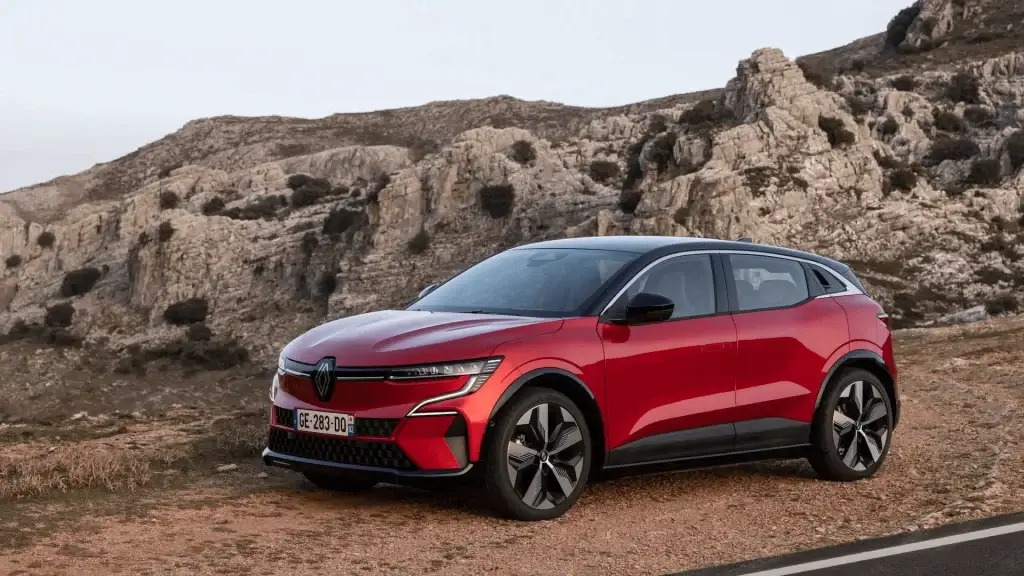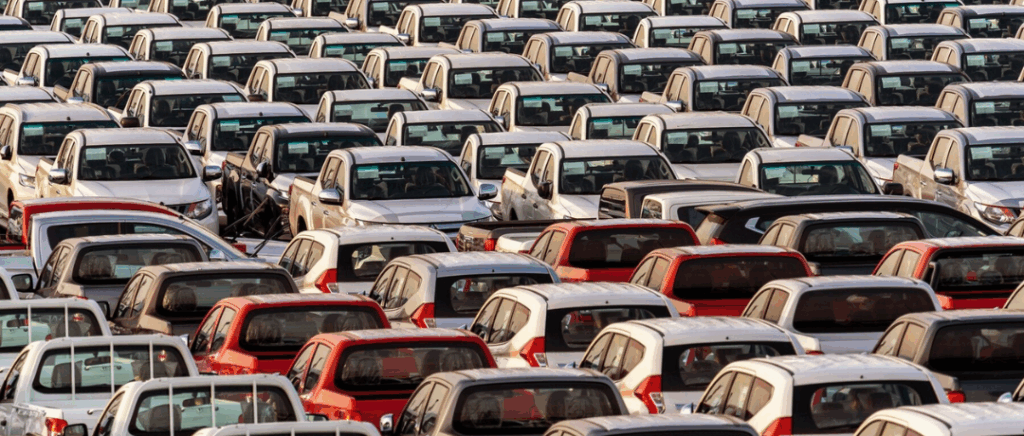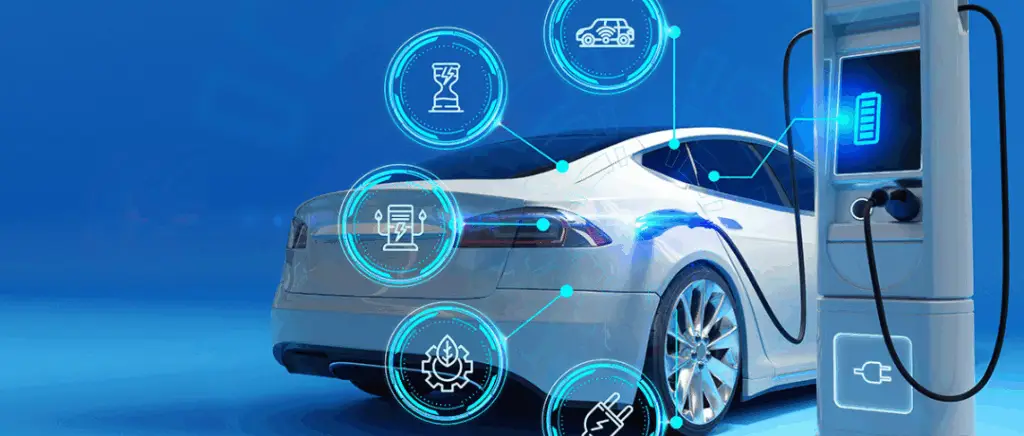Why choose a small electric car for last mile delivery?
Growing pressure from EPZs and regulations to achieve carbon neutrality
The pressure is on for fleet managers and logistics executives: by 2025, last-mile delivery (or last mile delivery) is now being played out under the watchful eye of the Low Emission Zones (EPZ) and increasingly stringent regulations on carbon neutrality.
See also our article :
It's impossible to ignore this transformation: since the beginning of 2025, all French conurbations with more than 150,000 inhabitants must implement an EPZThis will restrict access to the most polluting vehicles, and impose an accelerated electrification of business fleets.
Worth noting : Their deleterecently adopted in parliamentary committee and soon to be debated in public session, could have far-reaching financial and political repercussions. According to a note from the French Treasury, this measure could deprive France of more than €3 billion from the 2020 European recovery planThis will undermine the country's climate commitments.
See also our article :
For companies, the challenge is twofold: to remain competitive while anticipating financial and operational penalties. Visit non-compliant internal combustion vehicles (Crit'Air 3, 4, 5) are being banned from city centreswhich exposes companies to fines, costly detours, higher TCO (total cost of ownership) and a loss of competitiveness in the face of competitors already committed to the transition. At the same time, the Mobility Orientation Act (LOM) and the Climate and Resilience Act set ambitious targets: 70 % of low-emission vehicles in fleet renewal by 2030compared with 50 % previously. This is a real strategic turning point for urban logistics.
See also our article :
Opting for a small electric car is a pragmatic and visionary choice:
- You guarantee your teams fluid access to strategic urban areaswithout fear of restrictions or sanctions.
- You reduce thecarbon footprint of your businessemissions, while logistics already accounts for 13 % of national CO₂ emissions.
- You benefit fromfinancial advantages These include lower taxation, lower maintenance costs, and an enhanced image for your company in the eyes of customers and partners.
The figures speak for themselves: as stated in the preamble, the last-mile delivery can account for up to 41 % of total logistics costs and nearly 30 % of urban CO₂ emissions. Faced with these challenges, the small electric car is emerging as the most agile, sustainable and cost-effective solution for business fleets.
A format adapted to urban logistics
In the day-to-day life of a fleet manager or logistics manager, every minute and every square metre counts. Last-mile delivery is often a juggling act between narrow streetsand scarce parking spaces and traffic constraints which are constantly evolving. That's where the small electric car comes into its own: its compact size is simply perfect for the city.
In concrete terms, a small electric care generally displays a length between 3.5 and 4.2 metres. This means fewer problems navigating traffic jams, parking closer to customers or accessing pedestrian and semi-pedestrian zones, where the commercial vehicles are struggling to make inroads. According to Ademe, one compact vehicle reduces average delivery time in city centres by 20 % compared with a conventional van. This time saving translates directly into improved team productivity and optimised routes.
But that's not all: the improved handling of these small models reduces the risk of snagging and damage, reducing insurance and maintenance costs. Their reduced turning radius It also makes manoeuvring easier in underground car parks or in the courtyards of buildings, situations with which urban delivery drivers are very familiar.
In terms of loading, manufacturers have made huge strides forward: today, one electric city car or a small compact utility vehicle useful volume of 300 to 800 litres, more than sufficient for most last-mile deliveriesWhether it's parcels, meals or business equipment. Result: you maximise the fill rate of each vehiclewhile retaining a high degree of flexibility in the management of your flows.
See also our article :
A more competitive TCO than you might think
The total cost of ownership (TCO) of a small electric car is often much lower than you might think, especially for urban logistics professionals. While the purchase price of an electric vehicle is generally higher than that of a combustion-powered model, this difference is quickly made up for by the fact that the cost of the vehicle is much lower than that of a combustion-powered model. substantial savings on daily use and maintenance.
Let's take a concrete example: in 2025, recharging a small electric car at home costs on average between €2 and €4 per 100 kmagainst 8 to 10 € for a petrol or diesel vehicle. On a fleet of 10 vehicles, each covering 25,000 km per yearThis represents up to 18,000 in annual savings on energy alone. Added to this are reduced maintenance costs:
- no draining,
- fewer wearing parts,
- and simplified maintenance, which can make reduce maintenance costs by 30 to 40 % compared with a combustion van.
The tax system also works in favour of fleet managers: exemption from company vehicle tax (ex-TVS), absence of ecologic malus and weight tax. These advantages considerably lighten the overall bill over several years.
See also our article :
Finally, the the residual value of electric vehicles is risingThis is driven by growing demand and improved batteries. As a result The TCO of a small electric car not only becomes competitivebut often lower than that of a thermal vehicle as soon as the annual mileage is substantial or the car is used intensively in town.
The 3 main selection criteria for companies
L'autonomy urban cycle
Real range in the urban cycle is a decisive criterion because it directly affects the ability to carry out daily rounds without interruption or stress linked to recharging.. Although manufacturers are announcing flattering figures for the WLTP (Worldwide Harmonized Light Vehicles Test Procedure) cycle, it is a fact that they are not using the WLTP. essential to focus on the autonomy that can actually be achieved in the cityThis is where last-mile delivery comes into play on a daily basis.
In practice, the urban range of a small electric car depends on a number of factors:
- the thermal management,
- the temperature exterior,
- the capacity of battery,
- l'energy efficiency of the model,
- and theuse of on-board equipment such as air conditioning or heating.
For example, a the electric city car claimed to cover 350 km in the WLTP cycle will often offer between 250 and 320 km in real urban usewhich is still more than sufficient for the majority of daily tours, ggenerally between 80 and 150 km.
Tests carried out in 2025 confirm that some models even exceed their WLTP estimates in the city, thanks to the energy recovery at regenerative braking and the low average speed of urban traffic. Conversely, long motorway journeys significantly reduce range, which is not the case for urban delivery, where fuel consumption remains optimised.
See also our article :
To make the right choice, it is therefore crucial to analyse :
- Rapid recharging capability, to reduce downtime,
- The consistency between the advertised range and your daily mileage requirements,
- And the actual range observed in independent tests or during trials in real-life conditions.
In short, opt for a small electric car with a realistic urban range of between 250 and 400 km depending on modelThis means guaranteeing continuity of service for your fleet, optimising the productivity of your teams and avoiding unpleasant surprises on the road.
Load volume
Load volume is much more than just a figure: it's a decisive factor in the profitability and efficiency of urban delivery operations. At a time when every delivery round needs to be optimised, choosing a small electric car with the right payload volume means you can maximise occupancy ratesof limit the number of round trips andensuring customer satisfactioneven in the context of the EPZ and tight deadlines.
Manufacturers have understood this need: today, certain compact models, such as the BYD ETP3, offer up to 3.5 m³ of load volume and a useful capacity of 780 kgwhile maintaining a length less than 4.5 metres. This type of configuration is ideal for urban distribution and last-mile logisticsIt can be used to transport large numbers of parcels or goods, even in narrow streets or hard-to-reach areas.
In practice, a well-sized load volume means :
- Optimise each tour by reducing the number of journeys required,
- From reduce operating costs (fuel, working time, wear and tear on the vehicle),
- D'improve fleet flexibility to respond to peaks in activity or specific requests.
Recharging: time and infrastructure
Recharging time: a key criterion for urban logistics
The speed of recharging is a decisive factor: the most recent models allow for recover 80 % of range in less than 30 minutes on a fast charging point. For a fleet dedicated to the last mile, this means smoother rotations, less waiting and better vehicle availability. Intelligent recharging solutions, incorporating dynamic power management, also make it possible to optimise charging according to peaks in activity and the real needs of the fleet.
See also our article :
Corporate infrastructure: obligations and opportunities
Since 1 January 2025, the LOM law has required all companies with a car park with more than 20 spaces install at least one charging point for every 20 pitchesor 5 % of equipped seatswith specific requirements forPMR accessibility.
For the new or renovated buildingsthis rate rises to 20 %. These regulations, coupled with subsidies and the growing importance of the public network (multiplied by 20 in 10 years), guarantees fleet managers a reliable, scalable infrastructure that is adapted to the growing needs of urban logistics.
A network ready for professionals
The French recharging network has become denser and more professional, with fast charging points, centralised management solutions, monitoring of consumption, automated reimbursement for home recharging, etc. All these tools make life easier for fleet managers and allow electric vehicles to be integrated seamlessly into existing processes.
See also our article :
Top 10 small electric cars for urban delivery in 2025 available from Beev
Hyundai Inster : The agile ultra-compact for the city
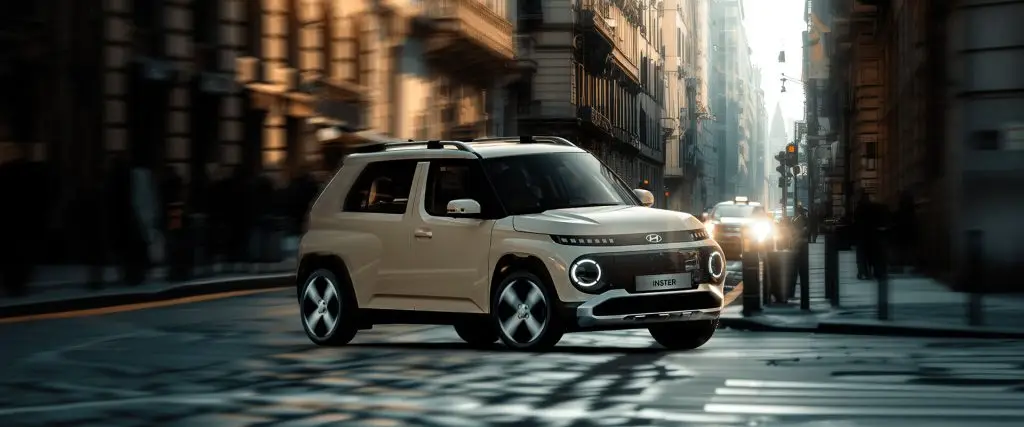
With its 355 km WLTP range (and up to 358 km in mixed conditions), the Hyundai Inster is perfectly calibrated to cover several rounds a day without needing to recharge. A range that meets most needs in dense urban areas, where daily journeys rarely exceed 80 km.
But the major advantage of this model lies in its versatility and manoeuvrability:
- A compact size (1.57 m high, 1.45 tonnes unladen) to get around congested city centres with ease,
- A 351-litre boot volume sufficient for light to medium deliveries (parcels, foodstuffs, pharmacies, etc.),
- And a easier access to parkingThis is a well-known headache for logistics managers.
In terms of performance, the Hyundai Inster is equipped with a 116 bhp engine for an acceleration of 0 to 100 km/h in 10.6 secondsThis is more than enough space to fit smoothly into city traffic. The 49 kWh battery feeds this mechanism with a optimised fuel consumption of 13.7 kWh/100 km in real-life conditions, to keep TCO under control while meeting the decarbonisation targets set by CSR strategies.
Another strong point: rapid recharging. In 29 minutes, you can recover up to 284 km via a 120 kW DC terminalSo you can make the most of your breaks and get your routes moving again straight away. For home or depot recharging, theInster connects in 5 hours to an 11 kW AC terminal. A real plus for shared fleets.
Finally, the cost remains contained: 12.25 for a full refillbarely 3.4 per 100 km travelledThis is a significant competitive advantage over combustion engines, which are still used in some fleets.
Worth noting This electric city car is available in professional leasingmore specifically in long-term leasing (LLD) from €360/month At Beev, the Hyundai Inster is positioned as an affordable and competitive solution, ideal for VSEs, SMEs and key accounts looking to start or accelerate the electrification of their fleets.
Discover our exclusive offers
Škoda Elroq 60: The versatile compact SUV for urban deliveries
This little Electric SUV allie generous autonomy, remarkable load space and fast chargingThese are just some of the advantages that make it the right choice for urban delivery professionals.
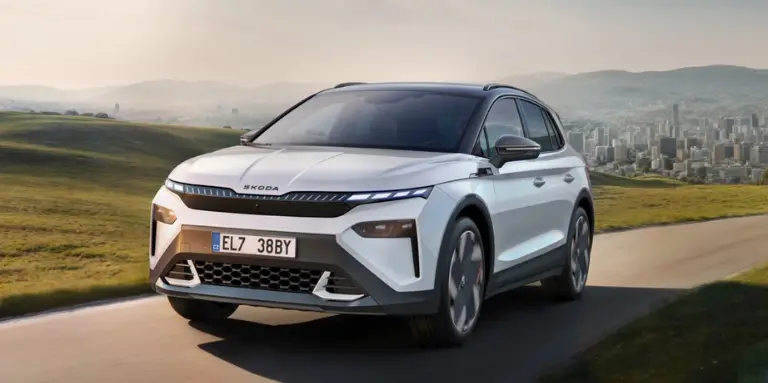
With a WLTP range of 449 kmand about 410 km in real mixed conditionsThe Škoda Elroq 60 can cover all its daily routes without having to recharge during the day. This endurance is based on a 63 kWh lithium-ion batteryoptimised for controlled fuel consumption of 15.2 kWh/100 km for off-road use.
In terms of logistics, the Škoda Elroq scores points with a rear boot volume of 1,580 litres. It is one of the best capacity/size ratios on the market for an SUV in this category. This makes it possible to envisage e-commerce deliveries as well as the transport of professional equipment or foodstuffs.
In terms of performance, the vehicle offers 204 horsepowera 310 Nm torque and rear-wheel drive. It reaches 100 km/h in 8.5 secondsThis ensures smooth journeys even on inter-city routes, while remaining perfectly adapted to the constraints of urban traffic.
Recharging times have also been designed to meet the operational constraints of professionals: you only need 25 minutes to recover 359 km range on a DC terminal (165 kW)This allows rapid rotation during breaks. Visit standard recharging (AC 11 kW)the full tank takes 6.5 hoursideal for a full recharge at the depot overnight.
On the cost side, the price of a full refill is estimated at €15.75which is equivalent to approximately 3.84 for 100 km travelled. The vehicle is available from €449 per month on long-term hire from Beev (LLD pro), a competitive price given the versatility it offers.
Kia EV3 Long Range: Maximum range for extended tours
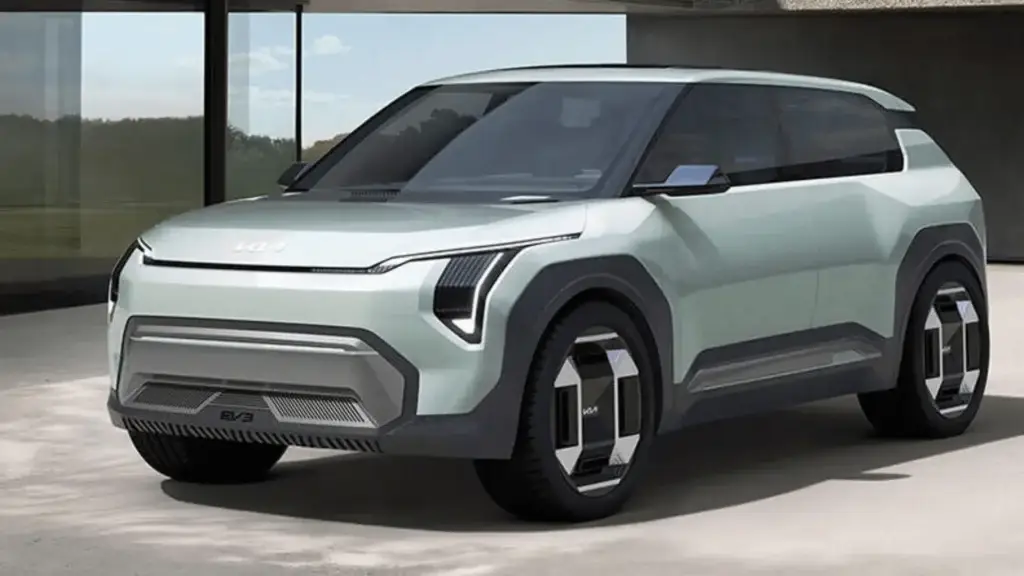
For the professionals who have to manage long-range deliveriesor who want rationalise recharging to maximise the availability of their vehiclesthe Kia EV3 Long Range is a the benchmark for endurance and versatility. It is aimed at fleets that need an electric vehicle that is robust, durable and operational in both urban and suburban environments.
With a WLTP range of 600 kmand approximately 545 km in real-life conditionsthe Kia EV3 Long Range is positioned as the best-in-class endurance in the compact segment. This comfortable autonomy means you can cover several days' deliveries without recharging, which is a strategic advantage when organising logistics rounds.
This level of performance is based on 81.4 kWh batteryone of the largest available in this segment, for a real consumption estimated at 15.1 kWh/100 km. This energy efficiency, combined with a 1,885 kg unladen weightThis ensures excellent roadholding, even with a loaded boot.
In terms of useful volume, the boot capacity reaches 1,251 litresThis optimises the payload while maintaining a relatively compact size, making it ideal for use in dense urban areas. This load volume makes the Kia EV3 Long Range equally well suited to the delivery of bulky parcels and to multi-customer distribution over long distances.
The engine performance, with 204 bhp, 283 Nm of torque and a acceleration from 0 to 100 km/h in 7.7 secondsThe front-wheel drive system ensures smooth, dynamic driving, even on fast lanes or in mixed traffic. The front-wheel drive transmission enhances stability on wet or urban roads.
When it comes to recharging, the vehicle offers flexible solutions:
- Visit direct current (DC) at 135 kWit is possible to recover 480 km in just 33 minutes (from 10 to 80 %), limiting operational interruptions.
- Visit alternating current (AC) on a conventional 11 kW terminalA full recharge is achieved in 8h30ideal for night shifts at the depot.
Le the cost of a full recharge is estimated at €20.35That's around €3.7 per 100 km, a very competitive ratio given the range and volume on board.
Finally, theLong-term leasing for professionals starts at €477 per month at Beev (excluding the environmental bonus), a reasonable price given the vehicle's technical capabilities and the operational savings it will deliver in the medium term.
Volvo EX30 Twin Motor Performance : Scandinavian power for the city
La Volvo EX30 Twin Motor Performance stands out as one of the the most dynamic, high-performance models in its category. Designed to meet the demands of urban deliveries while offering a high level of comfort and power, it is aimed at fleets looking for a premium, agile vehicle that complies with new environmental constraints.
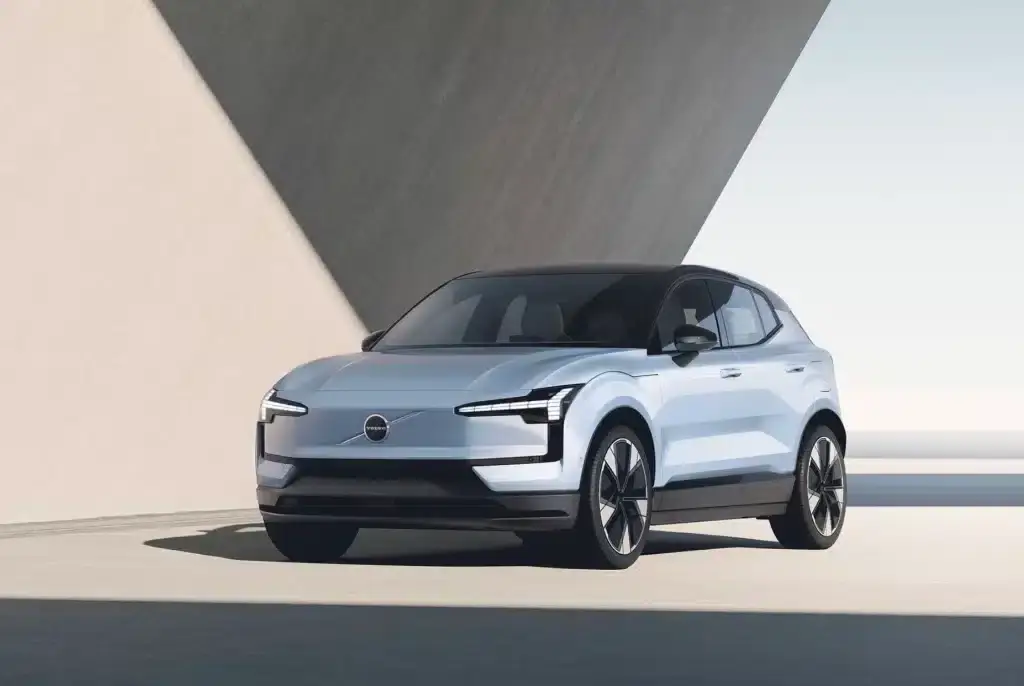
Equipped with a WLTP range of 460 kmand a real range estimated at 525 km in urban useIt exceeds the usual expectations for such a compact car. This performance is based on a 69 kWh battery and a controlled combined consumption of 16.3 kWh/100 kmalthough this rises to 21.5 kWh/100 km in intensive real-life conditions. It's still very competitive in terms of on-board power.
Under the bonnet, the Volvo EX30 packs 428 hp and 543 Nm of torquefor a 0 to 100 km/h in 3.6 seconds. An impressive technical record, although it is intended for use where responsiveness and safety are paramount, particularly for express deliveries or business journeys punctuated by frequent braking and acceleration. What's more, its all-wheel drive gives it excellent roadholding, even in difficult conditions.
Le boot volume remains reasonable at 318 litresThis is sufficient for light to medium delivery in urban areas: small parcels, medical equipment, food products or services.
Recharging is fast and flexible:
- 28 minutes DC fast recharge (250 kW) to recover 368 km of range (from 10 to 80 %),
- 11.30 a.m. on 11 kW AC terminal for a full top-up at home or at the depot.
Le the cost of a full refill is estimated at €17.25or approximately 4.07 for 100 km travelledThis is a very reasonable price for a twin-engined car with all-wheel drive.
Renault 5 E-Tech Autonomie Confort : The return of an icon, pro version
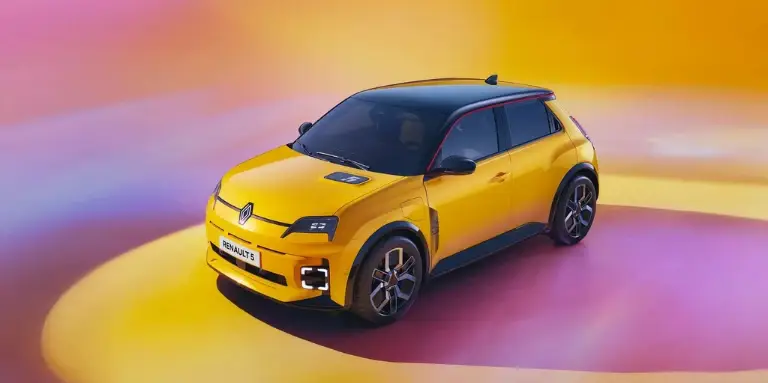
With the Renault 5 E-Tech Autonomie Confortthe French manufacturer is signalling the return of a legend of tarmac, this time designed to meet the demands of professional urban mobility. Compact, sober and well-equippedThis electric version breathes new life into a classic... while taking it to the heart of today's concerns: energy efficiency, controlled costs and practicality for last-mile operations.
In practical terms, this small 100 % electric city car with a WLTP range of 400 kmand reached 320 km range in actual delivery conditions thanks to a optimised fuel consumption of 13.9 kWh/100 km. This performance is entirely consistent with the daily rounds carried out by delivery drivers in dense urban areas.
When it comes to recharging, the Renault 5 is compatible with the DC fast charging (100 kW)to recover 80 % of autonomy in 33 minutes. La slow home charging (AC 11 kW) requires 5h45This timeframe is perfectly suited to night-time fleet rotations.
But what also appeals to fleet managers is its compact (4.06 m long) and its agilityreinforced by a front-wheel drive and an acceleration of 0 to 100 km/h in 7.5 seconds. The engine develops a 150 hp and 245 Nm of torqueThis is a guarantee of responsiveness in urban traffic.
Finally, the boot capacity, 1,000 litresis a real asset for light delivery professionals. Express deliveries, small parcels, foodstuffs or service equipment can all be accommodated without compromise.
Budget-wise, the Renault 5 E-Tech Autonomie Confort is available on a full service leasing basis from €502 excl. tax/month from BeevA price that makes this model one of the most competitive on the market in its category.
BYD Dolphin Surf: Affordable electric cars for city centres
La BYD Dolphin Surf arrives in Europe with a clear promise: to offer a 100 % electric city car that's connected, compact and durable enough to meet the demands of modern urban mobility at an unbeatable price.
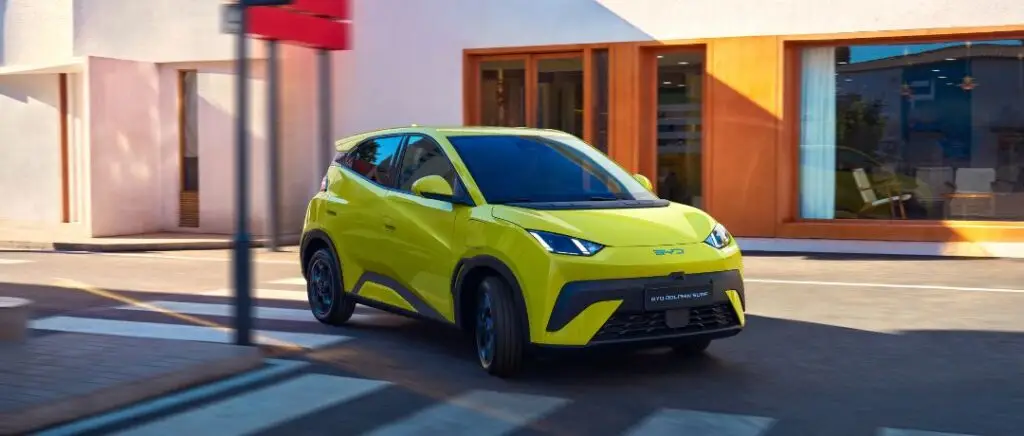
See also our article :
Only 3.99 metres longIt's easy to manoeuvre in narrow streets, busy delivery areas or underground car parks. Its 2.5 m wheelbase offers plenty of interior space: four comfortable seats, a large boot volume of 308 litres, extendable to 1,037 litres and a thirty or so compartments for everyday items. It's the ideal candidate for last-mile delivery professionals, particularly in restricted areas.
Visit autonomyBYD is hitting hard. At urban cycleThe Dolphin Surf can cover a distance of up to 507 km (Boost version)This means you can complete several tours without recharging. Even in mixed useshe exceeds 300 kma remarkable performance for this segment. The user also has a DC fast charge (10 to 80 %) in 30 minutesand three-phase AC load at 11 kW. This versatility of recharging means that schedules can be optimised, including for shared fleets.
Under the bonnet, the motor delivers between 65 kW (Active and Boost) and 115 kW (Comfort)for a maximum torque up to 220 NmThis is sufficient for acceleration and manoeuvring under load. Despite its urban orientation, it reaches speeds of up to 150 km/h, a guarantee of flexibility in suburban use.
The Dolphin Surf also features the V2L technology as standard (up to 3.3 kW), enabling you to power a device or recharge work equipment directly from the battery. A real plus for mobile professionals.
Finally, its price makes it a very competitive model: from €19,990 inc VAT (Active), 23,990 for the Boostand 25,990 for the Comfortwith 1,000 launch discount on the 2 top versions until the end of June 2025. All covered by a manufacturer's warranty of 6 years (vehicle) and 8 years (battery and engine).
Opel Frontera : The affordable electric SUV for professionals
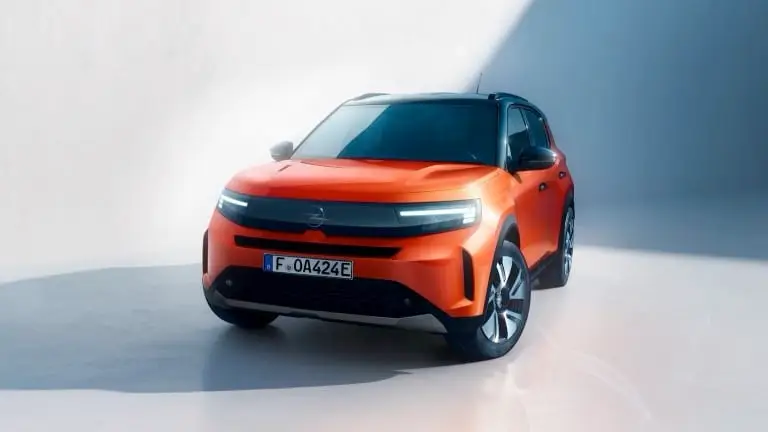
Designed to meet the needs of urban and suburban professionals, theOpel Frontera combine practical, compact and reasonable range. It has a range of up to 305 km in the WLTP cyclewith a controlled consumption of 17.6 kWh/100 km. In real use, therange remains at 303 kmconfirming its reliability on daily journeys. The 45 kWh lithium-ion battery allows full recharge for just €11.25 at home (based on 0.25 €/kWh), a major advantage for intensive users who want to control their energy costs.
See also our article :
When it comes to recharging, the Frontera is as flexible as it is practical: compatible with the fast charge up to 100 kW DCshe recovers 244 km of range in 32 minutes (from 10 to 80 %). On a 7.4 kW domestic terminalthe cost is approximately 7 hours for a full chargeThis is perfectly suited to traditional work cycles, night shifts or breaks.
Sound engine develops 113 hp and 120 Nm of torquewith an acceleration of 0 to 100 km/h in 12.1 seconds. That's more than enough performance for urban and intercity travel, especially as the drive is made stable and fluid by a well-calibrated front-wheel drive system.
Despite his compact dimensions (4.39 m long, 1.80 m wide)The Frontera shines in terms of load capacity. Its boot capacity reaches 1,594 litres in maximum configuration, a volume that will appeal to tradesmen, delivery drivers and other professionals looking for an uncompromising everyday van. With a unladen weight of 1,514 kgIt's easy to handle and doesn't consume a lot of energy.
Available at 491 excl. VAT/month leased from BeevThis electric version of the Opel is clearly aimed at professionals looking for a vehicle that is economical, functional and well-equipped. Affordable, economical and versatile, it is an intelligent alternative for company fleets or self-employed drivers making the transition to electric vehicles.
Fiat Grande Panda : The icon revisited for urban deliveries
Fiat is resurrecting a legendary name with the electric Grande Panda, while projecting it into a new era. This model, with its revamped cubic look, is aimed directly at urban delivery professionals looking for an electrically-powered vehicle. small multi-purpose utility vehiclepractical and fuel-efficient. With a WLTP range of up to 320 km (315 km measured in real mixed conditions)The electric Panda boasts an excellent size/toughness ratio. Its consumption remains containedat only 14.9 kWh/100 km in real useThis guarantees controlled operating costs over the long term.
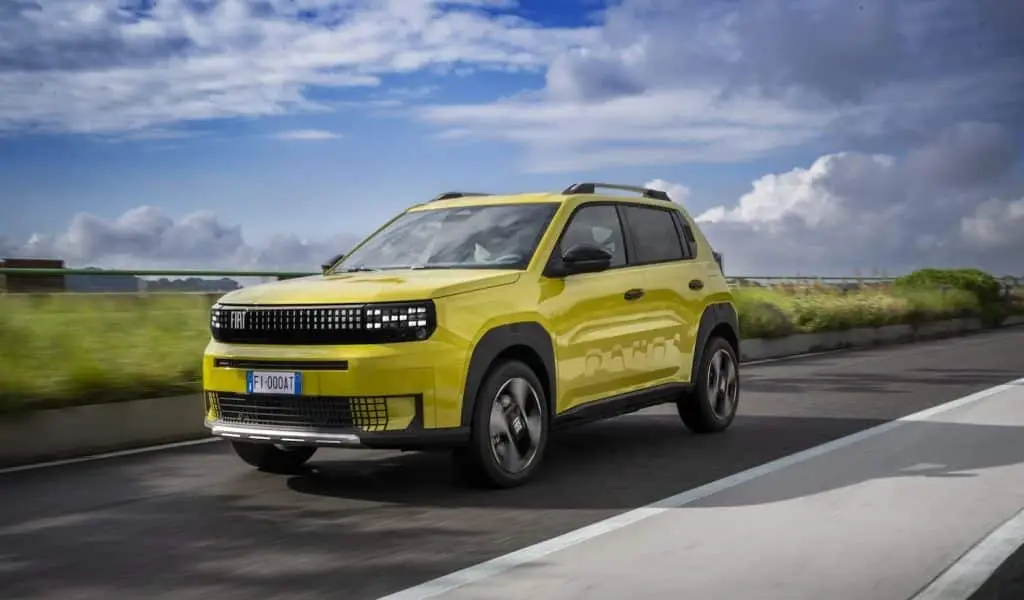
See also our article :
Powered by a 113 hp engine and a 120 Nm torquefrom 0 to 100 km/h in 12 secondsThis is a modest figure, but it's enough to keep it moving efficiently in heavy traffic. It is powered by a 45 kWh lithium-ion batterycompatible with 400 V architectures. When it comes to recharging, the compromise is well calibrated: 7 hours for a full home charging (7.4 kW AC)and 49 minutes on fast terminal DC (100 kW) to go from 10 to 80 %, a rapid solution for optimising delivery rotation.
Compact yet roomy, the Fiat Grande Panda is 3.99 m long and 1.57 m wide high, while offering a generous boot capacity of 1 315 litres. It can accommodate up to five passengers, a valuable versatility for shared professional use. All contained within a 1,500 kg unladen capacityThis is an advantage in terms of manoeuvrability in town and fuel consumption.
Available from €430 ex-VAT/month on Beev's long-term hire scheme, this electric city car revisits the DNA of the Panda with a clear ambition: offer a reliable, economical and functional response to today's urban logistics challenges.
Renault 4 E-Tech : The electric crossover with vintage style
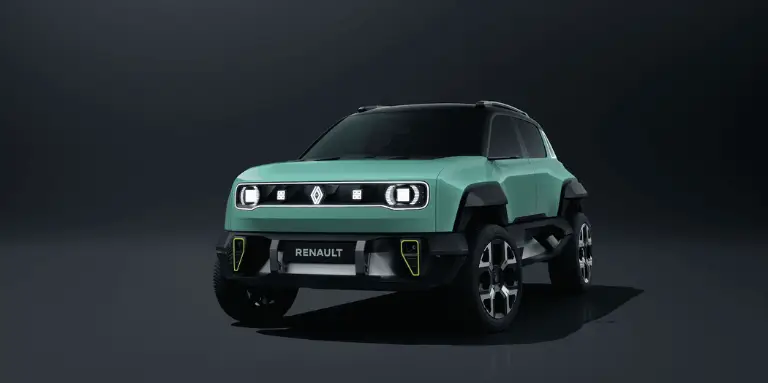
A contemporary reinterpretation of a great classic, the Renault 4 E-Tech doesn't just wink at the past. It reconciles retro charm and modern demands with surprising efficiency.
This compact crossover, designed for both city and suburban travel, boasts an impressive range of up to 322 km on the WLTP cyclewhile in mixed real-life conditionsit is around 293 kmThis makes it particularly reliable for regular professional use. Thanks to its average consumption contained at 14.6 kWh/100 km and its 43 kWh lithium-ion batteryRenault 4 E-Tech offers an excellent ratio between energy efficiency and running costs, with a full charge estimated at just €10.75.
See also our article :
Charging times confirm this ease of use on a daily basis. On a fast terminalthe vehicle goes from 10 to 80 % in 32 minutes258 km in less than a lunch break. At home, using an 11 kW AC charging point, you can recharge your 0 to 100 % is completed in 4h30This makes it ideal for a night-time routine or for recharging at the depot.
Under the bonnet, the 122 hp engine delivers 225 Nm of torquewhich accelerates 0 to 100 km/h in 9.2 seconds. With its front-wheel-drive transmission, the vehicle offers a smooth, reassuring drive, even in heavy traffic. Its well-balanced size 4.14 m long, 1.80 m wide and 1.55 m highIt's easy to manoeuvre, while offering plenty of space inside. At the rear, the 1,405-litre boot makes it easier to transport parcels or professional equipment, without sacrificing passenger comfort. 5 seats.
Design, Renault here is a clever blend of modernity and nostalgia: the rounded lines inspired by the legendary R4 has been given a new look, with sleek details and a distinctive lighting signature that give it a real personality on the road. A silhouette that will appeal to fleet managers keen to project an original, sustainable image, as well as urban delivery drivers looking for stylish practicality.
Available at a competitive long-term leasing rates from €479 per month with BeevThe Renault 4 E-Tech is the ideal alternative for companies wishing to electrify their fleets without sacrificing originality or comfort. Its retro look, combined with a well-calibrated specification sheet, makes it a professional tool that's as clever as it is attractive.
Renault Megane E-Tech : The versatile electric car for professionals
Renault is betting big to win over professionals looking for a complete electric vehicle that's equally at home in town or on the road. The Megane E-Tech not only boasts an elegant, status-laden design, it also combines solid performance with remarkable efficiency, all in a size perfectly suited to fleet requirements.
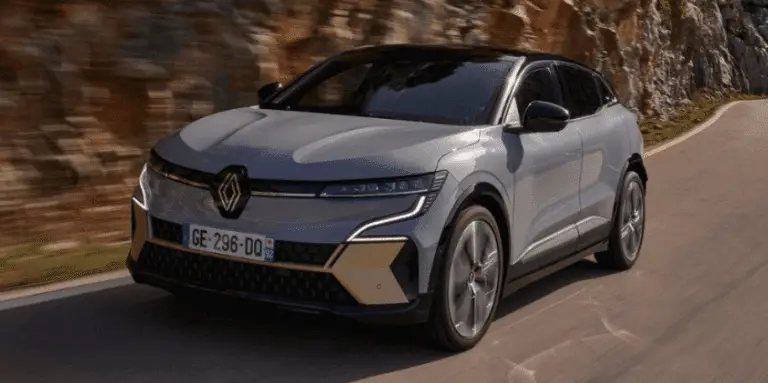
Thanks to a 65 kWh batteryThis model promises up to 470 km of WLTP range and even 460 km in real-life conditionswith a perfectly controlled consumption of around 13.8 kWh/100 km. Enough for everyday use without stress or frequent recharging.
See also our article :
In terms of performance, the 131 bhp engine coupled with a generous 250 Nm of torque for brisk accelerationwith a 0 to 100 km/h in 10.5 seconds. The driving experience is enhanced by a well-calibrated front-wheel drive and well-balanced dynamics, making this Megane just as enjoyable in town centres as it is on fast lanes. And with a tare weight kept under 1,700 kgThe whole system remains homogeneous, stable and efficient, even under intensive use.
Recharging is another key advantage. The Megane E-Tech supports up to 129 kW direct currentwhich makes it possible to recover 80 % of battery in 56 minutes or regain 376 km of range in just 30 minutes. At home or at the office, the charging power in alternating current can reach 22 kWwith a full recharge in just a few minutes more than 3 hours. This flexibility meets the needs of different business scenarios: night-time charging, daytime charging or long-distance charging.
The cabin has been designed to combine comfort and functionality. With a boot volume of 1,332 litres with bench seat folded down, 5 real seats and modern architecture, this model is just as suited to the needs of mobile technicians as it is to those of mobile managers. The well-optimised on-board space also makes it easy to professional configuration with on-board equipment. And thanks to its dedicated electric platform, the Megane maximises interior space without compromising agility.
The table summarising the 10 small electric cars for urban delivery in 2025 available from Beev
| Models | WLTP range | Fast recharge (DC) | DC Time | Engine power (bhp) | Unladen weight (kg) | Maximum boot capacity (L) | LLD Pro price excl. tax/month |
|---|---|---|---|---|---|---|---|
| Hyundai Inster | 355 km | 284 km in 29 min (120 kW) | 29 min | 116 | 1450 | 351 | 360€ |
| Škoda Elroq 60 | 449 km | 359 km in 25 min (165 kW) | 25 min | 204 | 2000 | 1580 | 449€ |
| Kia EV3 Long Range | 600 km | 480 km in 33 min (135 kW) | 33 min | 204 | 1885 | 1251 | 477€ |
| Volvo EX30 Twin Motor Perf. | 460 km | 368 km in 28 min (250 kW) | 28 min | 428 | 2811 | 318 | Price on request |
| Renault 5 E-Tech Autonomie Confort | 400 km | 80 % in 33 min (100 kW) | 33 min | 150 | 1450 | 1000 | 502€ |
| BYD Dolphin Surf | 507 km | 10-80 % in 30 min (DC) | 30 minutes | 88-115 (depending on version) | 1294 - 1390 (depending on version) | 308 - 1037 (depending on version) | Price on request |
| Opel Frontera 44 kWh | 305 km | 244 km in 32 min (100 kW) | 32 min | 113 | 1514 | 1594 | 491€ |
| Fiat Grande Panda 44 kWh | 320 km | 256 km in 49 min (100 kW) | 49 min | 113 | 1500 | 1315 | 430€ |
| Renault 4 E-Tech 40 kWh | 322 km | 258 km in 32 min (80 kW) | 32 min | 122 | 1510 | 1405 | 479€ |
| Renault Megane E-Tech EV60 | 470 km | 376 km in 30 min (129 kW) | 30 minutes | 131 | 1699 | 1332 | Price on request |
Conclusion: a strategic choice that should no longer be put off
In 2025, choosing a small electric car is no longer just a gamble on the future: it's a strategic decision for any company faced with urban logistics challenges. As we have seen, The models analysed in this top 10 offer a convincing balance between range, load volume, controlled costs and flexibility of use. Whether you're a small business, an SME or a large corporation looking to electrify your fleet, there's a solution today that's tailored to your operational constraints and CSR objectives.
But more than just a catalogue of vehicles, this comparison highlights a fundamental trend: electric vehicles are finally becoming a concrete, high-performance response to the challenges of last-mile delivery. Gone are the days of compromising between performance and responsibility. By optimising your routes with models designed for the city, you can gain in competitiveness, brand image and peace of mind in the face of regulatory changes.
